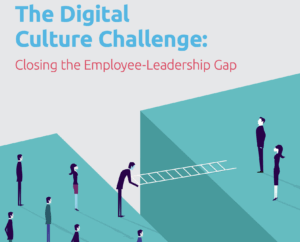For the last few years, “mobile first!” has become the mantra among savvy digital marketers. But a mobile first approach seems to be more of an ideology than it is a standard in digital design. Recent research shows that marketers still invest in mobile as an afterthought or as a bolt on to more mainstream digital programs. For some reason, executives still need more convincing to properly fund and support mobile initiatives that span the entire customer journey not just pieces of it.
While mobile is often referred to as the second screen, the reality is that smartphones are really the first screen among connected consumers. It’s always within reach. And, it is the first place consumers go to communicate, research, and share. As of last year, mobile platforms accounted for 60% of total digital media time spent according to ComScore. And, mobile devices accounted for one in four of all online purchases as reported in IBM’s Digital Analytics Benchmark.
The truth is that “mobile first” should be the standard for all things digital. But here’s the canary in the coalmine, if that metaphor even makes sense today. According to a recent study conducted by Nielsen, roughly half of consumers believe mobile is the “most important resource” in their purchase decision-making. And, more than a third said they only used mobile exclusively. At this point, mobile first may not be enough. To be successful however, brands and agencies must think beyond mobile campaigns and start to think about mobile only as a complete foundation for the next generation customer journey.
Right now, mobile tends to exist without an owner to take accountability in the customer experience. As a result, mobile strategies for the most part are focused on an isolated aspect of customer engagement, whether it’s marketing, commerce, loyalty, etc. and very specific instances within each. This is because the whole lot of solitary programs is owned by different stakeholder groups that are strewn across the organization and not necessarily in tune or in alignment with one another. It’s not uncommon for these departments to not collaborate with one another and thus, the mobile experience is discombobulated by design and impossible to deliver anything but an integrated customer journey.
This is a problem and it needs someone to solve it now.

It is practically impossible for mobile-first consumers to undergo a digital experience on one screen and are forced, again by design, to multiscreen and/or channel hop to accomplish a desired task or goal. Some 90% of consumers move between devices to accomplish a goal, using an average of three different screen combinations each day. They put up with it however because most CX strategies don’t consider the user experience elements of device and native behavior to that device as a journey unto itself. Said another way, consumers deal with it because most brands don’t cater to their mobile needs through every stage of the customer lifecycle so they have no choice. But at some point they will. And when they do, they’ll defect. That’s why it’s time for strategists to think beyond mobile first and start thinking about mobile only campaigns tied to mobile only full funnel ecosystems.
Over the last year, my Altimeter Group colleague and I studied how brands were approaching mobile CX to better understand challenges and opportunities facing digital strategists. Starbucks, Zappos, Sephora, Intuit among others are
beginning to explore a mobile-only approach in addition to integrating cross-channel strategies with omni-channel experiences. They’re looking at mobile as a marketing channel to not only deliver native experiences to the mobile screen but also cater to them along the entire journey and relationship…specific to mobile.
You can download a complementary copy of the research here.

Mobile is not only reshaping the customer journey, it is rebooting the entire experience in the process. How and when customers transact with brands throughout the lifecycle is also moving to the small screen — from research to purchase, to service and support, through loyalty and advocacy. Mobile is now both part of the customer experience and also emerging as a self-contained experiential platform.
Someone has to take the lead in bringing mobile to the forefront of digital design. Investing in a mobile program just to check the box is no longer good enough. The reality is that mobile is now the first screen. Brands and agencies must adapt start taking the initiative to rethink the mobile customer journey. Doing so ensures maintain relevance among discerning customers who are already becoming mobile first and mobile only.
It’s a mobile world, design accordingly.
Connect with Brian on Social Media
Twitter: @briansolis
Facebook: TheBrianSolis
LinkedIn: BrianSolis
Youtube: BrianSolisTV
Experience is everything…read my new book, X!
Credit: Photo by Imaginechina/REX (4104312b) – Chongqing, China. Pedestrians are seen walking on a pavement that has been split in half – one side for phone users and the other side for non phone users. The left side is for people talking or looking down at their mobile phones, while the other side is for pedestrians not using their phones.







Hey it looks like you copied your html into the wysiwyg instead of the code view.
Couldn’t agree more! On our latest product we designed we used the desktop version of the site targeting people that the site was built “Only for a mobile experience”. And so far it has worked, over 95% engagement has been through mobile, and with an incredible return rate as well!!
https://yamba.io/
Check it out! Great article : )